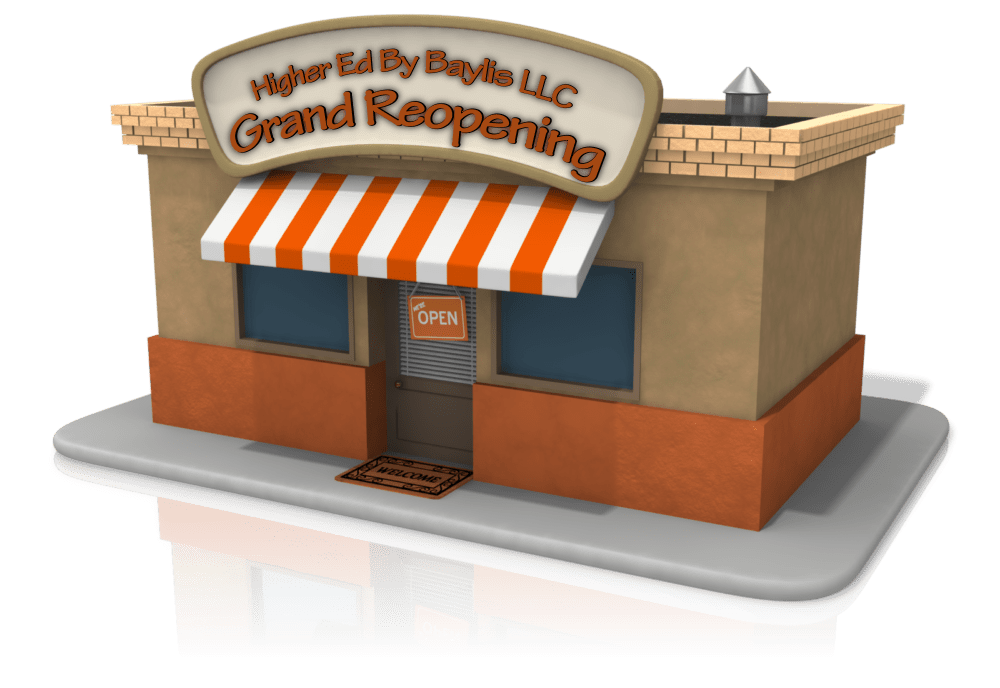 Rebekah Basinger’s Generous Matters blog post Surviving, Thriving and Six Degrees of Separation has started an avalanche of thoughts in my mind. My initial thought was that Rebekah is working with a Surviving/Thriving Paradigm. This paradigm can outline a common pattern of organizational behavior. Undeniably, from reading Rebekah’s post, I know that it is specifically being applied to ministries and organizations. As I continued to delve into the steps of separation, I came to see a natural and obvious spill over of applications of this paradigm to for-profit businesses. However, during those periods of semi-consciousness when I was trying to go to sleep and trying to wake up, my thoughts settled in on a number of very wild, but related ideas. This concept could also have traction for individuals. In addition, if we can apply the ideas generated in these thought games to individuals, ministries and businesses, would it not make sense to try to scale them up the organizational ladders? Can we apply the Surviving/Thriving Paradigm to whole industries and even countries? We may just be following in the footsteps of Paul Kennedy with his book The Rise and Fall of the Great Powers, or Karen Blumenthal with her biography, Steve Jobs: The Man Who Thought DIfferent.
Rebekah Basinger’s Generous Matters blog post Surviving, Thriving and Six Degrees of Separation has started an avalanche of thoughts in my mind. My initial thought was that Rebekah is working with a Surviving/Thriving Paradigm. This paradigm can outline a common pattern of organizational behavior. Undeniably, from reading Rebekah’s post, I know that it is specifically being applied to ministries and organizations. As I continued to delve into the steps of separation, I came to see a natural and obvious spill over of applications of this paradigm to for-profit businesses. However, during those periods of semi-consciousness when I was trying to go to sleep and trying to wake up, my thoughts settled in on a number of very wild, but related ideas. This concept could also have traction for individuals. In addition, if we can apply the ideas generated in these thought games to individuals, ministries and businesses, would it not make sense to try to scale them up the organizational ladders? Can we apply the Surviving/Thriving Paradigm to whole industries and even countries? We may just be following in the footsteps of Paul Kennedy with his book The Rise and Fall of the Great Powers, or Karen Blumenthal with her biography, Steve Jobs: The Man Who Thought DIfferent.

It’s not the first time that I have had similar thoughts. One thought in particular has been the cause of nightmares on occasion: “Does the Higher Education Enterprise go through periods of thriving and just surviving?” You will notice that in deference to some of my sisters and brothers in higher education, I didn’t use the term “industry.’ In June 2010, I published the post What does higher education have in common with the watch industry the chocolate industry and toilet paper manufacturers? I am convinced my watch/chocolate/toiletpaper post is directly related to the surviving/thriving topic. In my post, I first looked at how the watch industry was completely revolutionized by the introduction of a new technology and a new idea. Watches didn’t have to run on jewels and finely manufactured gears. Time be could kept by crystals excited by electrical current. Watches didn’t need dials to tell you the time. They could do it with lighted numerals. Watches didn’t need to be expensive works of art to be useful. Not everyone wanted an expensive piece of jewelry that told time. This revolutionized the watch industry right out from under the noses of the staid, historic brand names, some of which disappeared. They were replaced by upstart technology firms that had little concern about beauty, with the exception of Steve Jobs and Apple, who had a new definition of beauty. In comparing higher education with the chocolate industry, I focused on two extremes within the chocolate industry which were able to bifurcate the industry and not only survive, but thrive. Not everyone wanted the expensive Dove, Ghirardelli, Godiva or Cadbury chocolates, but these chocolates were still able to maintain a sizable market share and thrive as businesses. At the same time Hershey thrives with a completely distinct market, pricing structure and marketing plan. The third example in my post, toilet paper, is a product that has been used universally for many years. Over five centuries the distribution plan in this industry has radically changed. The old methods have been completely replaced by a new model. Is this a warning for higher education? Are we unnecessarily flushing money down the drain?

I published a second post in June 2010 entitled: Comparison of American Higher Education with the American Automotive Industry. In this post I obviously attempted to compare American higher education with the American automotive industry. This was not a great time for the American automotive industry. In my post, I outlined some of the problems that brought into question the survival of the upper midWest, rust belt automotive industry. A November, 2005 WSJ piece A Tale of Two Industries posed doubts about the health of the American automotive industry that had ruled the roost since the middle of the twentieth century. This article began with a story that hit home to a number of people who had been our neighbors when we lived in Indiana. Grant County, Indiana, had been reliant on heavy manufacturing since WWII. General Motors was the county’s largest employers. Buried in the WSJ article was an announcement that GM was closing its Marion plant and eliminating 2,000 jobs. This hit the small county seat very hard. The county’s unemployment rate was already hovering around 10%.
In my post, I noted the similarities between the decline of the once dominant model in the American automotive industry of manufacturing plants in the upper midWest with the rise of a “second American auto industry” in the South. This new competitive model was providing lower cost cars while still paying employees well for what they had been receiving in the new region. By 2005 it had captured 26% of the market for all new cars made in America. The WSJ article suggested that this switch came about because the old model of producing premium cars at premium prices no longer was bought unquestioningly by the American consumer. They were staging a price strike.

Meanwhile headline after headline each week, in educational news outlets, as well as the general public press, announced the closing or merging of colleges and universities. Many pundits were predicting the demise of higher education as we knew it. Why all of the gloom and doom? However, in my research of college closures, I found that the first decade of the 21st century was the decade with the fewest closures or mergers since 1850 when people started keeping track of these things. In my post I postulated that this reading of conditions by the higher education community was what I suggested was the Crab Pot Syndrome. Higher education had just experienced enrollment and building booms in the last two decades of the 20th century which had only been surpassed by the boom created by the return of WWII soldiers and the GI Bill. In addition, many proprietary institutions were prospering, as well as the online educational operations of public flagship universities and many residential liberal arts colleges. Why? They were providing a product at a reasonable price in a fairly convenient format for a public which did not believe that the premium that the residential liberal arts colleges and flagship universities were charging was worth the difference in price. On the whole American higher education seemed quite comfortable. It could be compared to a crab in a pot of water sitting on a stove, before the heat is turned on. The crab just sits there lounging in a pot. As the heat increases, it actually begins to enjoy the warmer water. It isn’t until the water almost reaches the boiling point, does the crab realize that it is in trouble. It begins to try to claw it’s way out of the pot. However, by this time it is too late, and this crab will soon be eaten for dinner.

At the conclusion of my aforementioned post I stated that: “I think we should be taking seriously the question raised by Joseph Marr Cronin and Howard E. Horton in their May 22, 2009 Commentary in the Chronicle of Higher Education entitled, Will Higher Education Be the Next Bubble to Burst?“ In the six intervening years since I wrote that post, a number of events have dramatically changed the landscape of higher education. Do those events alter my conclusions? My first conclusion now is that the bubble has already burst. As a fallout to that explosion, I would now say that we MUST reevaluate the whole enterprise of American higher education. This reassessment must answer all of the following questions concerning a new American higher education paradigm:
- What are the appropriate differences between the public and private education sectors?
- What roles should the federal and state governments play in public education?
- Do the federal and state governments have any role in private education?
- Who pays what in this new paradigm?
- What role do student loans pay in this new paradigm?
- What role does accreditation play in this new paradigm?
- What role should proprietary institutions and corporate universities play in this new paradigm?
- What role should career and technical training play in the new paradigm?
- What role should online education, eLearning and MOOCs play in the new paradigm?
- What role should non-traditional learning modalities play in the new paradigm?
- What role should badges and credentials play in the new paradigm

 I don’t want to be Chicken Little running around yelling “The sky Is falling! The sky is falling!” However, if we are not careful, it is quite conceivable that the tornado that is bearing down on us will level our enterprise and scatter the debris of what’s left all over creation.
I don’t want to be Chicken Little running around yelling “The sky Is falling! The sky is falling!” However, if we are not careful, it is quite conceivable that the tornado that is bearing down on us will level our enterprise and scatter the debris of what’s left all over creation.

























